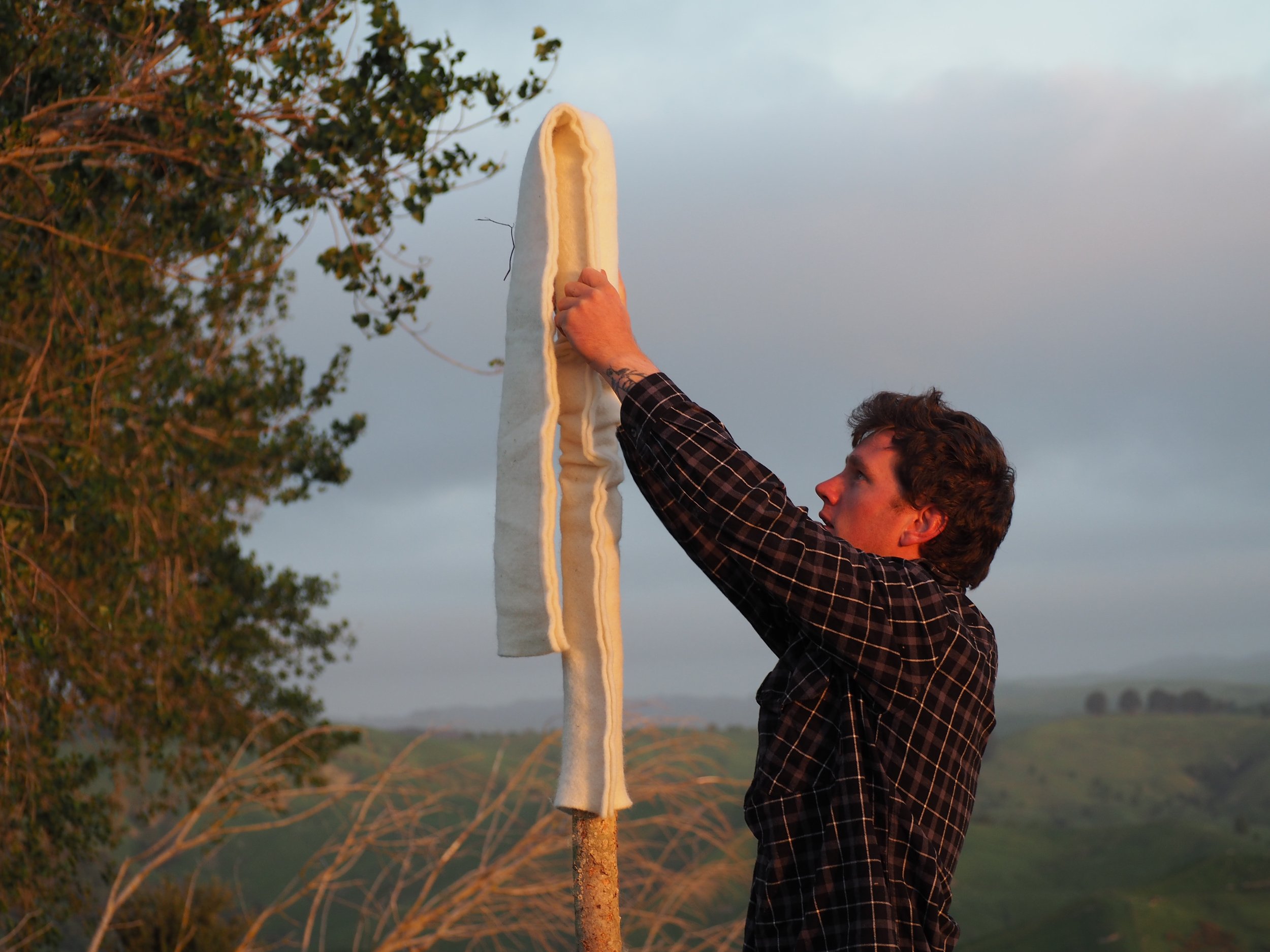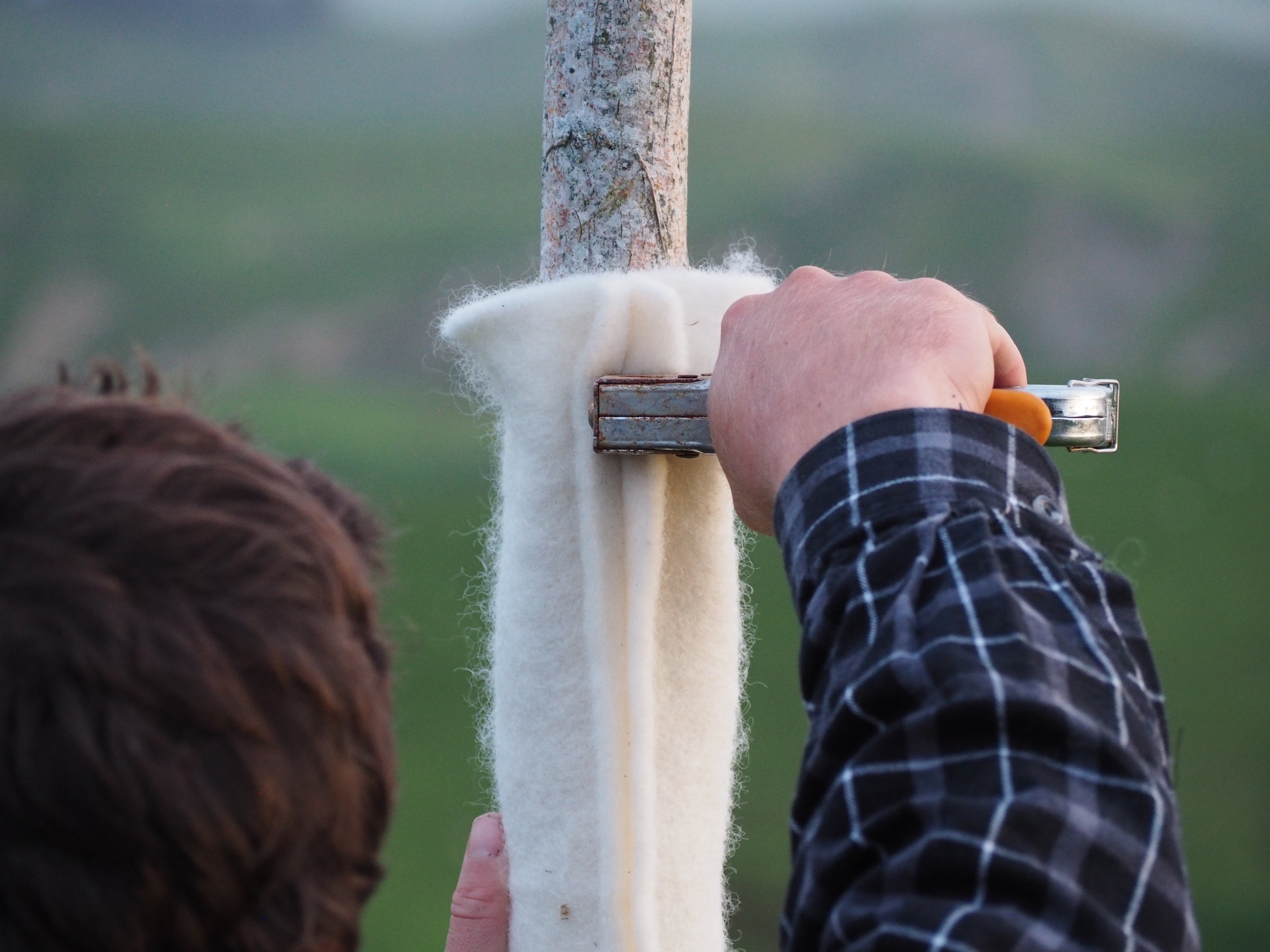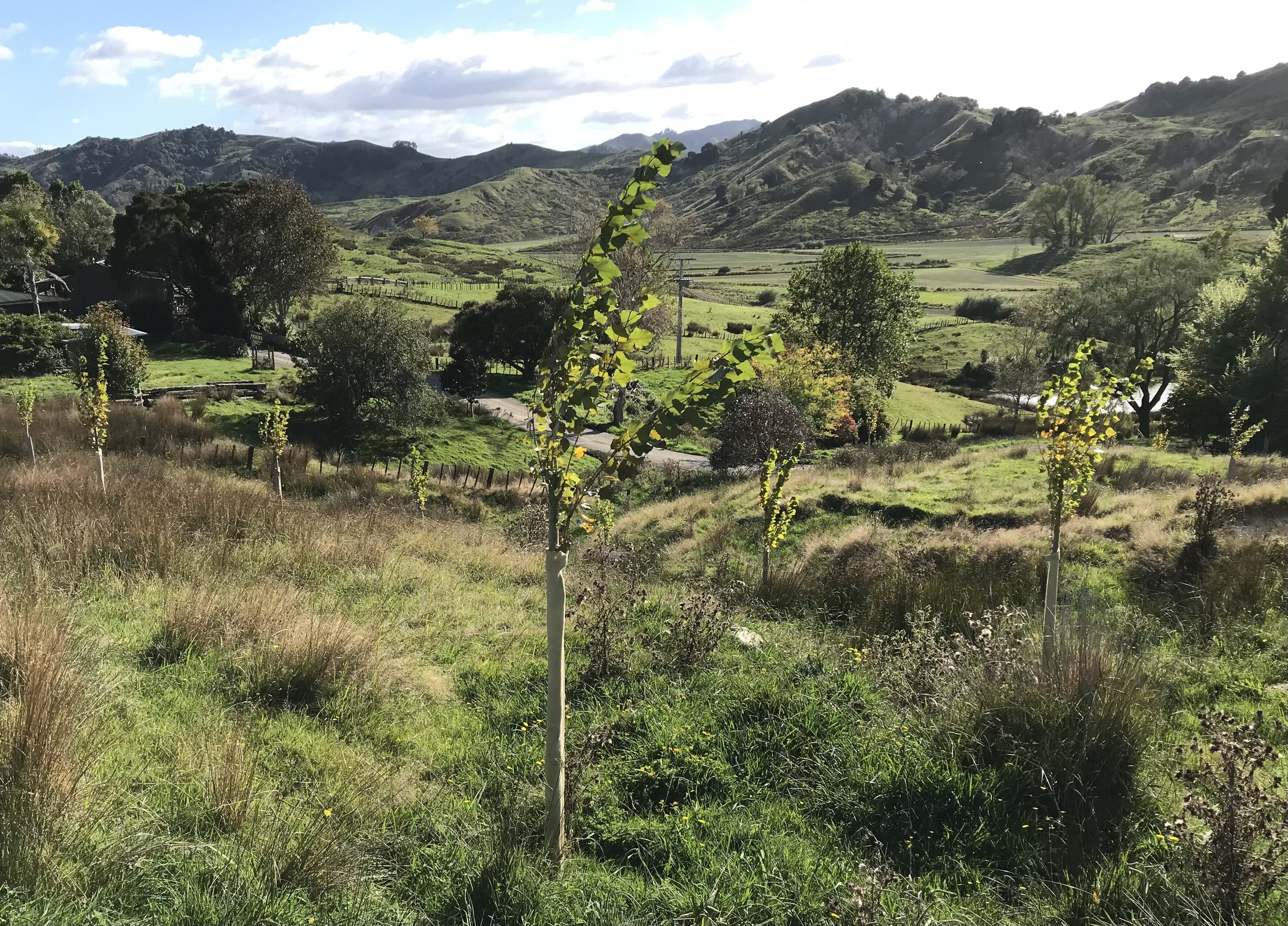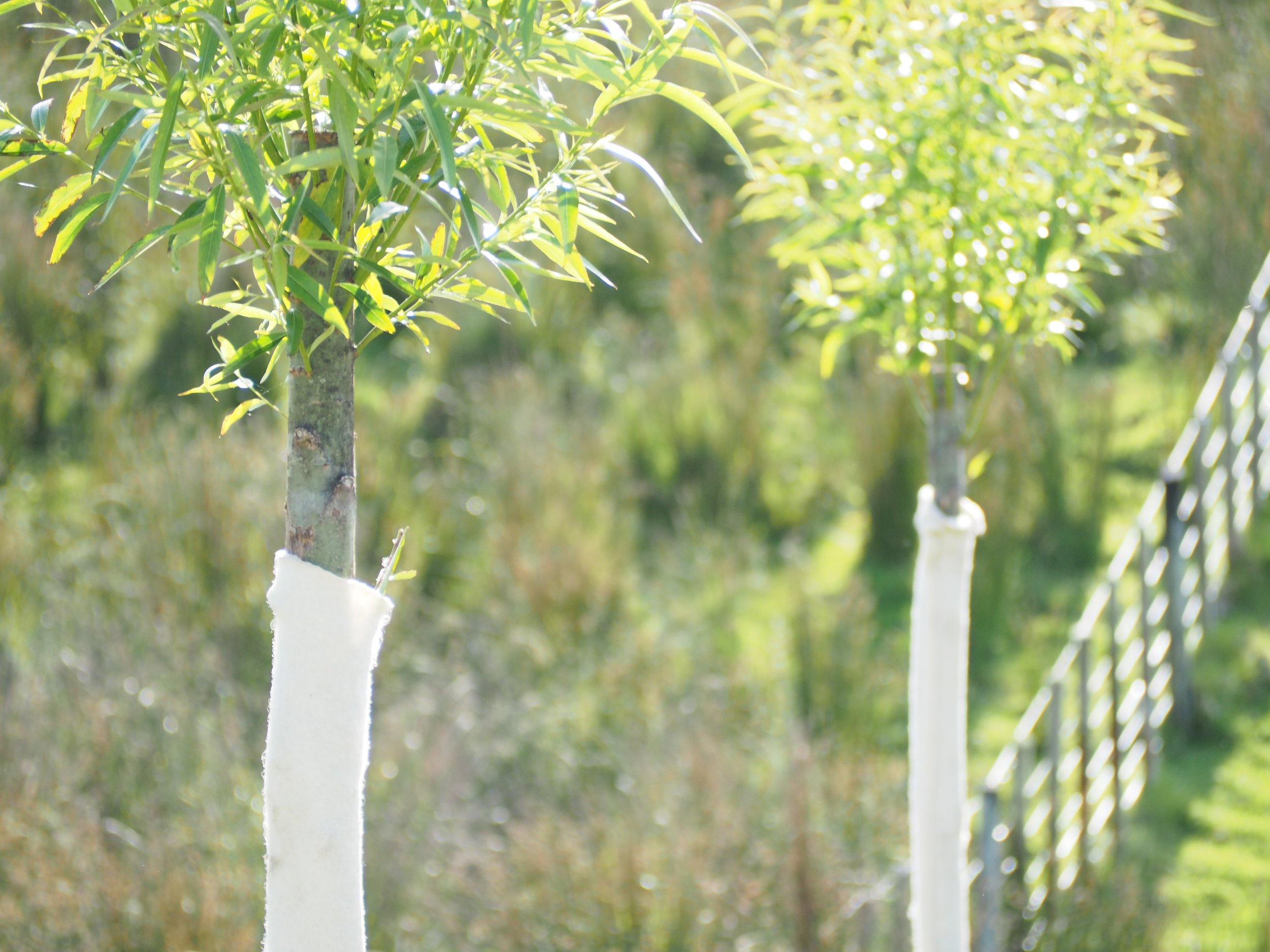Naturally Better
Floating Peak’s Wool Pole Protector
Wool is one of the most underrated natural fibres there are and like many farmers, we wanted to find greater uses for it. In 2022, we turned strong wool from our hill country farm in Central Hawkes Bay, felted it and developed a range of garden products and weed mats. Since then, we’ve thought of a greater use, something useful for all erosion prone land... pole protectors.
Pole protectors are traditionally made of plastic with no biodegradable alternative, so we manufactured some prototypes, and started trialing them on our farm in 2022.
In 2023, we expanded our trials, self-funding tests on 15 hill country farms across New Zealand, evaluating various wool types. These trials span regions including Northland, King Country, Taupo, Gisborne, Hawke’s Bay, Manawatu, Wellington, Canterbury, and Te Anau.
Following feedback and adjustments to improve performance and longevity, our Wool Pole Protectors are now more robust than ever.
Today, in partnership with Ravensdown’s Agnition, our WPPs are undergoing formal trials at over 30 sites across New Zealand, including six regional councils. On a personal note, we now exclusively use WPPs on our own farm, with 300 planted in 2024 and over 500 since the start of our WPP venture
Applying what we already know about wool, we bring to you the Wool Pole Protector - good for the paddock and good for the farmer.
Wool Pole Protectors Across New Zealand Paddocks
Why wool?
-
Wool allows bark to naturally harden.
-
Wool absorbs and releases moisture as needed.
-
Take a ewe, add grass and water to grow a beautiful fleece of wool.
-
Wool breaks down naturally over time.
-
Our Wool Pole Protectors are made using high micron fleece wool.
Farmer Trials
The farmers we work with comprise of owners, managers and corporates running medium to large holdings, on moderate to steep hill country farms. Participants planted between 50 and 500 poles annually.
From application, farmers were very positive about Wool Pole Protectors. They reported that they found:
The instructions were clear and easy to follow.
Installation was simple taking the same time, or slightly longer, to plastic.
The product was able to be applied to a variety of poplar and willow poles.
Based on application, all reported a high likelihood of using Wool Pole Protectors again.
“We liked the WPPs. They are lighter, take up much less space and are easier to transport to site than plastic ones. We installed them with the applicator after ramming which worked.”
“15+ year old plastic sleeve buried in grass and no signs of breaking down.”

























